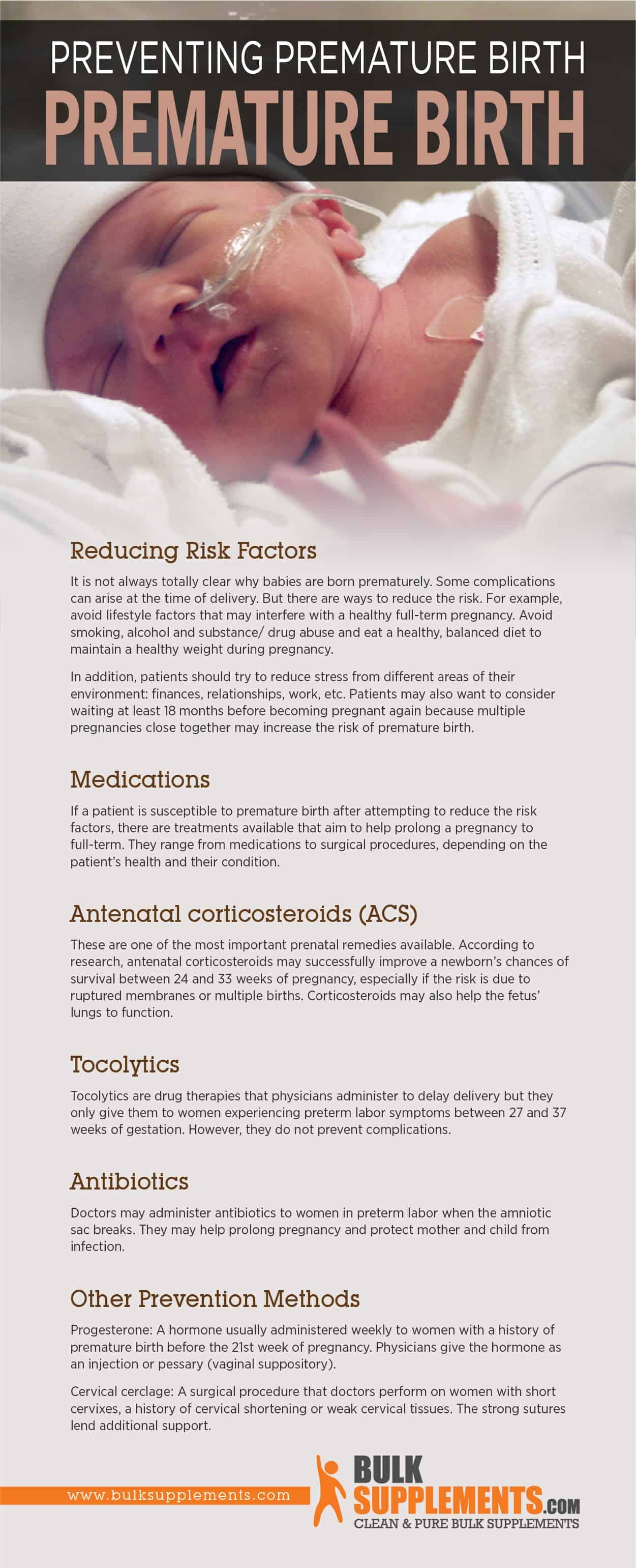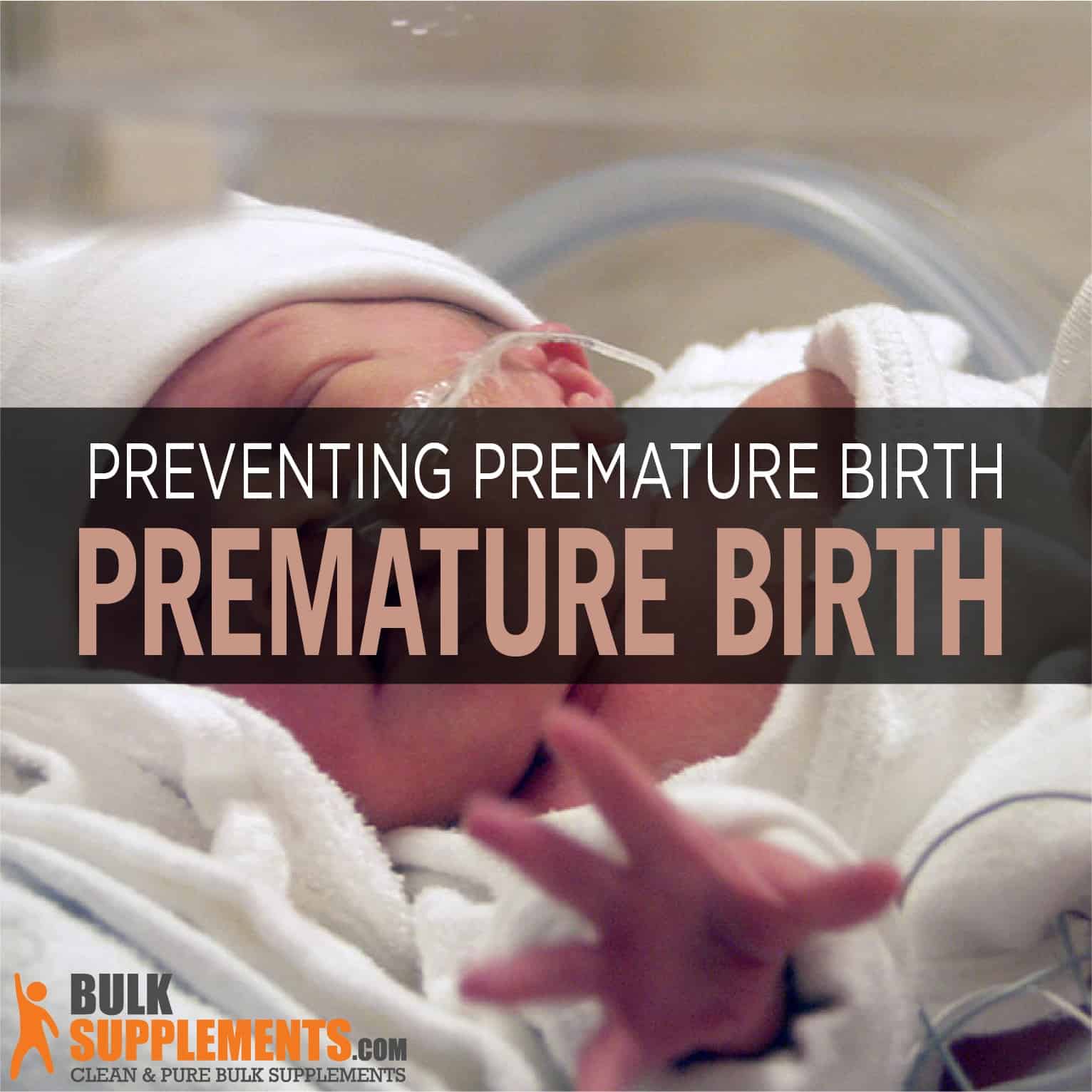What is Premature Birth?
Premature birth is the term used to describe the delivery of a baby before its due date, usually before 37 weeks of pregnancy. Most preterm births occur between weeks 34 and 36 of pregnancy. Medical experts refer to this term as the “late preterm stage.” The exact cause of premature birth is often difficult to determine but there are factors that can increase the risk (x).
In 2018, one in ten babies born in the United States was premature. In the same year, preterm births among non-Hispanic black patients were roughly 50 percent higher than those of non-Hispanic white patients, according to a study from the Centers for Disease Control and Prevention. Babies born prematurely and their mothers are susceptible to a variety of complications that lead to short- and long-term medical conditions, even death. The earlier a baby is born, the greater the risks (x).
What Are the Signs of Premature Birth?
Some signs of premature labor are similar to full-term labor. The mother may experience contractions and the water in the amniotic sac around the fetus may break. Other signs of premature birth include (x):
- Pelvic pressure as the baby pushes against or pelvis
- Abdominal cramping, which may be accompanied by diarrhea
- Dull back pain, especially in the lower region
- Change in vaginal discharge, which can be watery, bloody or contain mucus in slight or huge quantities
How Does Premature Birth Affect Babies?
Babies born too early may show distinct physical features: small in size, thin skin with visible blood vessels and covered with fine hairs, little body fat and little hair on the scalp. The infant may also have underdeveloped genitals (x). There are also short- and/or long-term complications, including:
Breathing Complications
- Apnea of prematurity (AOP): A pause in breathing for 15 to 20 seconds, which often occurs in conjunction with low heart rate or bradycardia (x).
- Respiratory Distress Syndrome (RDS): Lack of the substance surfactant in the baby’s immature lungs that prevents them from collapsing. It also prevents the infant’s organs from receiving essential oxygen (x).
- Asthma: Caused by inflammation in the lungs’ airways (x).
- Bronchopulmonary dysplasia (BPD): A lung disease, which occurs if the baby receives treatment with a breathing machine for an extended period. Babies with BPD are more prone to lung infections and long-term lung damage (x).
- Pneumonia: A bacterial or viral infection, which the baby can develop in the mother’s womb or in the first weeks of delivery, especially if doctors place the baby in an incubator (x).
Blood Complications
- Jaundice: Occurs when a substance called bilirubin builds up in the baby’s blood, causing the skin and sclera (the white part of the eyes) to turn yellow. The build-up results from an underdeveloped or poorly functioning liver or red blood cells (x).
- Anemia: While all neonatal babies suffer a decrease in red blood cells, the count is higher in preemies (x).
Infections
- Sepsis: Due to an underdeveloped immune system, infections can quickly invade an infant’s bloodstream and spread throughout the body. This is extremely life-threatening (x).
- Meningitis: Inflammation in the membrane lining of the brain or spinal cord caused by a bacteria, virus or fungus. It often leads to long-term conditions such as learning and vision disabilities (x).
Other Complications
- Cerebral palsy: Caused by insufficient blood flow, brain injury, infection and even jaundice. It impairs the neonatal muscle tone, posture and/ or movement (x).
- ADHD: Attention deficit hyperactivity disorder refers to ongoing hyperactivity, inattention and impulsive behavior (x).
What Are the Risk Factors for Premature Birth?
The risk factors for having a premature infant can be immense and life-threatening. They include pregnancies with multiples and giving birth to twins, triplets or more; pregnancies occurring within six months of each other; chronic conditions such as diabetes, hypertension, autoimmune diseases or HIV/AIDS (x).
Age is another important risk factor. Women under the age of 18 or over the age of 35 are high-risk for serious complications, especially for a first-time pregnancy. Weight is another risk factor. Underweight or overweight before pregnancy may be a problem, especially if it’s the result of an eating disorder such as anorexia nervosa or bulimia nervosa. The patient may also have issues with the uterus, cervix or placenta. For example, some women’s cervixes shorten too early during pregnancy. Infections may also increase the risk for premature birth, especially in the amniotic fluid surrounding the infant or in the genital area, including sexually-transmitted diseases.
Connective tissue disorders such as Ehlers-Danlos syndrome (EDS) and vascular Ehlers-Danlos syndrome (vEDS) and genetic mutations in collagen—the main structural protein in mammalian connective tissues—may also lead to premature birth. Besides causing preterm birth, the fetus can also inherit these disorders. Lastly, lifestyle factors include stress, smoking, substance abuse, physical injury or trauma (x, x).
Preventing Premature Birth
Reducing Risk Factors
It is not always totally clear why babies are born prematurely. Some complications can arise at the time of delivery (x). But there are ways to reduce the risk. For example, avoid lifestyle factors that may interfere with a healthy full-term pregnancy. Avoid smoking, alcohol and substance/ drug abuse and eat a healthy, balanced diet to maintain a healthy weight during pregnancy.
In addition, patients should try to reduce stress from different areas of their environment: finances, relationships, work, etc. Patients may also want to consider waiting at least 18 months before becoming pregnant again because multiple pregnancies close together may increase the risk of premature birth (x).
Medications
If a patient is susceptible to premature birth after attempting to reduce the risk factors, there are treatments available that aim to help prolong a pregnancy to full-term. They range from medications to surgical procedures, depending on the patient’s health and their condition.
Antenatal corticosteroids (ACS)
These are one of the most important prenatal remedies available. According to research, antenatal corticosteroids may successfully improve a newborn’s chances of survival between 24 and 33 weeks of pregnancy, especially if the risk is due to ruptured membranes or multiple births. Corticosteroids may also help the fetus’ lungs to function (x).
Tocolytics
Tocolytics are drug therapies that physicians administer to delay delivery but they only give them to women experiencing preterm labor symptoms between 27 and 37 weeks of gestation. However, they do not prevent complications (x).
Antibiotics
Doctors may administer antibiotics to women in preterm labor when the amniotic sac breaks. They may help prolong pregnancy and protect mother and child from infection (x).
Other Prevention Methods
- Progesterone: A hormone usually administered weekly to women with a history of premature birth before the 21st week of pregnancy. Physicians give the hormone as an injection or pessary (vaginal suppository) (x).
- Cervical cerclage: A surgical procedure that doctors perform on women with short cervixes, a history of cervical shortening or weak cervical tissues. The strong sutures lend additional support (x).

Vitamins and Herbs for a Healthy Pregnancy
Daily essential nutrients are critical in preventing fetal developmental issues, preterm births and maternal complications. Pregnant patients or patients hoping to get pregnant should eat a balanced diet with high-quality foods, including complex carbohydrates, protein, fruits, vegetables, healthy fat and micronutrients. Physicians may also prescribe supplements for patients to use in conjunction. They may help that the patient and baby receive adequate amounts of the essential vitamins, minerals and herbs they need (x).
However, always consult a doctor before taking any vitamins or supplements during pregnancy. They are not a cure or adequate prevention tool for any condition or illness. Check with a physician for accurate dosages to avoid any unwanted side effects.
Prenatal Vitamins
Most of the time, prenatal vitamins consist of vitamins and minerals specifically geared for gestation. Patients may want to choose natural prenatal vitamins, made with certified organic, whole-food fruits, vegetables and herbs free of GMOs and other additives (x).
Other Important Nutrients
Iron
Lack of iron can cause a deficiency in both the patient and the fetus, which causes tissues to receive insufficient oxygen. According to research, pregnant patients and developing fetuses are more vulnerable to iron deficiency than any other healthy patient. Sufficient iron intake can help increase oxygen supply and potentially reduce blood loss during labor (x).
Vitamin C
Vitamin C is necessary for proper iron absorption to encourage healthy circulation in the body. In one study, vitamin C improved the subjects’ iron absorption by almost 70 percent (x).
Folic Acid
Folic acid is a form of vitamin B9 and it is very important for pregnancy. It plays an important role in cell growth, including in developing fetuses. According to research, low levels of folic acid may be associated with fetal abnormalities and congenital disabilities. But with folic acid supplementation throughout a pregnancy, researchers noticed a reduced risk for low birth weight and preterm labor (x, x).
Calcium
Calcium is a crucial mineral for building fetal skeletal, muscular, nervous and circulatory systems and helps support healthy weight gain. It is natural for calcium levels to drop during pregnancy. But according to research, hypocalcemia (calcium deficiency) in pregnancy can cause problems for the patient and the developing fetus. It may interfere with bone health, lactation and red blood cell count (x).
Magnesium
Magnesium is crucial for a number of chemical reactions, including those involved in immune, muscular and nervous system function. In appropriate doses, magnesium may lower the risk of hypertension and preeclampsia in pregnancy as well as support healthy fetal growth (x).
Vitamin D
According to research, vitamin D may successfully reduce the risk of gestational diabetes and preeclampsia in mothers and support fetal skeletal and dental development. It also supports immune function and cell division (x). However, in high amounts, vitamin D can be toxic during pregnancy.
DHA
DHA is a type of omega-3 fatty acid, essential for fetal brain and retinal development. It is also important for healthy motor and cognitive development in growing fetuses. Research states that maternal DHA levels decline during pregnancy, which may require supplementation to help support a healthy pregnancy (x).
Supplements to Avoid
Other herbs and vitamins may not be safe to take during pregnancy. Even if the vitamins or herbs themselves are generally safe, taking too much of them may cause damage and increase the risk for complications, including (x, x):
Bottom Line
Premature birth refers to when a baby is born before its due date, usually before 37 weeks of pregnancy. Many of the signs are similar to full-term delivery. Babies born prematurely are more prone to short- and long-term complications including breathing issues, blood complications, infections and chronic diseases. Risk factors for preterm labor include multiple births; maternal health conditions such as diabetes, hypertension or HIV/AIDS; lifestyle choices like smoking and drug abuse; age and weight.
In some cases, patients with risk factors may need help from medical professionals to prolong the pregnancy and prevent preterm labor. To encourage a healthy pregnancy, patients should make lifestyle choices to support their own health and that of the fetus with a balanced diet and vitamin and mineral supplements if necessary. However, all patients should consult a doctor before taking any vitamins or supplements. These statements have not been evaluated by the Food and Drug Administration. Supplements are not intended to diagnose, treat, cure or prevent any disease.


